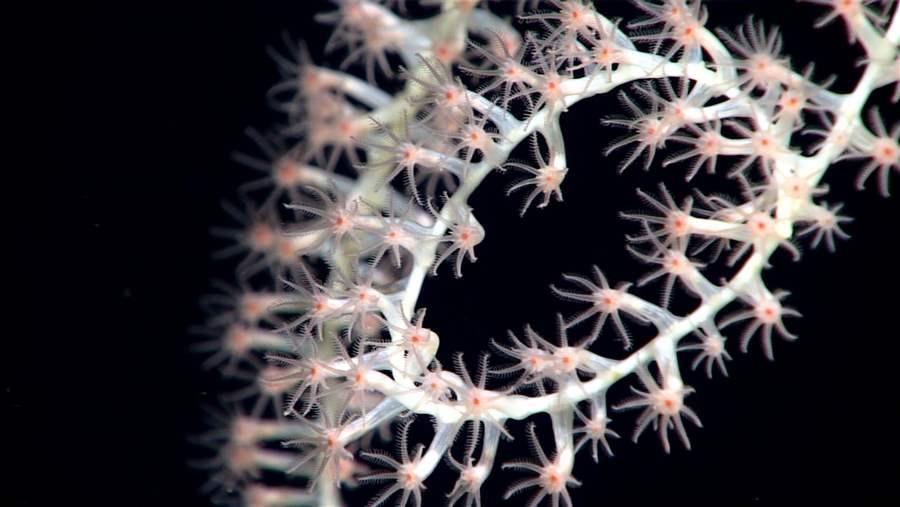Scientists Explore Deep, Dark Secrets of the Gulf of Mexico
Expeditions reveal intricate corals and the abundant marine life they support

On a recent deep-sea expedition in the Gulf of Mexico, scientists found the coiled tip of an isidid bamboo coral whip (Lepidisis caryophyllia) growing out of sediment.
National Oceanic and Atmospheric AdministrationScientists on a mission to explore the darkest depths of the Gulf of Mexico are using modern techniques to unveil the secrets of ancient deep-sea corals that help show why these organisms are worthy of protection.
The National Oceanic and Atmospheric Administration (NOAA) is venturing through the Gulf, using remotely operated vehicles to study animals, underwater landscapes, and geological features—all in an effort to better understand the unique ecosystems here. From late 2017 to May, the NOAA ship Okeanos Explorer took three trips into the Gulf, with researchers photographing and videotaping their discoveries.
For example, after a December trip to explore coral ecosystems, the researchers produced a video, “Architects of the Deep,” with remarkable footage and an explanation of how corals serve the ecosystem.
“Deep-sea corals are extremely important because they are architects of complex habitat,’’ mission co-scientist Charles G. Messing says in the video. “They build three-dimensional frameworks that can be taken advantage of by other organisms from fish and crustaceans, including commercial species, worms, microscopic organisms, sponges, mollusks, you name it. All of these organisms can find homes, shelter, food, etc., in these deep-sea coral habitats.”
Messing, a marine science professor at Nova Southeastern University in Fort Lauderdale, Florida, adds that the journey may even have revealed a new coral species.
The discoveries in the Gulf in recent years by NOAA and other explorers have helped give rise to a proposal to protect some of these special ecosystems. The Gulf of Mexico Fishery Management Council, which governs fishing in the Gulf’s federal waters, is expected to vote in June on whether to restrict the use of damaging fishing gear in up to 15 coral hot spots. Some corals grow for thousands of years and, once damaged, can take centuries to recover, if they do at all.
To help conserve coral ecosystems, sign The Pew Charitable Trusts’ action alert here or send comments to council members here.
Your voice could help safeguard the health of the Gulf of Mexico and its vital and varied marine life.
Holly Binns directs The Pew Charitable Trusts’ efforts to protect ocean life in the Gulf of Mexico, the U.S. South Atlantic Ocean, and the U.S. Caribbean.












